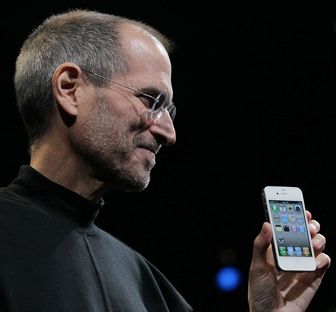Tales In Tech History: The Origins Of The iPhone

The iPhone X celebrates ten years of the iPhone. Here is the story of the phone that changed everything
The new iPhone X is pronounced is ‘iPhone ten’ to celebrate the tenth anniversary of the first ever iPhone.
Ten years ago, Apple launched what turned out to be its most popular product ever; a device that still remains its principle cash cow over a decade later.
At its unveiling in January 2007, late CEO Steve Jobs, revealed to the world “a widescreen iPod with touch controls, a revolutionary mobile phone and a breakthrough internet communications device.”
And on 29 June, it arrived.
It should be remembered that back then, Apple was not a phone maker. It was also going up well established industry titans such as Nokia, Motorola and BlackBerry. Yet demand for the iPhone took off and never really stopped. Indeed, Apple has now sold over one billion of the devices.
 Apple iPhone
Apple iPhone
Ten years ago nearly all mobile phones had a physical keyboard, or operated a touchscreen driven by a stylus. But Steve Jobs wanted a mobile device that had no keyboard, and he insisted the only stylus people ever wanted was their own finger.
That design ethos encapsulated in the original iPhone (otherwise known as the iPhone 2G) changed the mobile landscape forever, and arguably changed the fortunes of a number of mobile giants along the way.
The iPhone device not only triggered the touchscreen revolution, but a year later in 2008 it also sparked the app revolution, when Jobs revealed an App store on iTunes. This resulted in a hugely successful mobile app business, and it turned out to be another money maker for the firm.
Over the years, the iPhone underwent a number of changes. Since its initial release, it is now on its 11th generation, and the design of the device has changed radically as well. Its screen size has grown for example, and in 2014 a much larger model was introduced, in the form of the iPhone 6 Plus.
That is not to say that the ten years of the iPhone have been plain sailing. There were some hiccups along the way. The iPhone was always a slippery device and unlike an old Nokia for example, did not react well to being dropped.
Perhaps its most notable problem however was back in 2010 when the iPhone 4’s antenna problem became known as the ‘iPhone Death Grip‘. This issue resulted in the loss of signal if the user held the phone in a particular manner.
Steve Job’s initial reaction to a customer complaining about the issue was to tell him to hold the phone differently.
Yet issues like this were few and far between. The iPhone has been the principle money maker for Apple for many years now, but worryingly last year sales of the iPhone dropped for the first time in the device´s history.
That said, the iPhone remains a hugely important device for Apple, as it secures Apple’s position as the two number handset maker in the world.
Little wonder then that Apple boss Tim Cook continues to tout the device’s potential.
“iPhone is an essential part of our customers’ lives, and today more than ever it is redefining the way we communicate, entertain, work and live,” said Cook. “iPhone set the standard for mobile computing in its first decade and we are just getting started. The best is yet to come.”
The iPhone X is the biggest upgrade to the range in a number of years, adding an all-display OLED screen, AR support, facial recognition and wireless charging.
Who knows what’s next?
Timeline of the iPhone
- 9 January 2007 – Steve Jobs launches the original iPhone model, which could be called the 2G
- 11 July 2008 – The second generation iPhone 3G launches and comes with a white colour option
- June 2009 – The arrival of the iPhone 3GS – sales for the year reach more than 25 million.
- 2010 – First major redesign with the iPhone 4. This new handset featured a front and back casing made of glass for the first time, with a steel trim and edges.
- 2011 – The iPhone 4S is introduced, including voice assistant Siri
- 2012 – The iPhone 5 delivers another redesign, this time increasing the screen size to four inches.
- 2013 – Another “S” model with the arrival of the iPhone 5s. The first iPhone to include a fingerprint scanner integrated into the home button, otherhwise known as Touch ID.
- 2014 – the arrival of the iPhone 6 and 6 Plus, and for the first time the iPhone comes in two sizes – both feature increased screen sizes at 4.7 and 5.5 inches respectively.
- 2015 – The 6s and 6s Plus are launched with a new pressure sensitive screen.
- 2016 – The iPhone 7 and 7 Plus are delivered, with the Plus boasting a dual rear camera designed to rival digital camera picture quality.
- 2017: The iPhone X with Face ID and the iPhone 8 with wireless charging arrive
Quiz: What do you know about the iPhone 6, iPhone 6 Plus and Apple Watch?












